Shipboard anti-aircraft artillery systems Type 730 and Type 1130 (China)
Modern Chinese anti-aircraft guns, such as Type 730 and Type 1130, carry on history from the Soviet AK-630 system. A number of these systems were sold to China, after which he set up production of similar systems copied without a corresponding license. Anti-aircraft artillery system (ZAK) Type 630 soon became the basis for a similar system Type 730, on the basis of which subsequently developed Type 1130. Serial production of anti-aircraft complexes of these models was carried out both in parallel and in series. Now ships receive the 730 and 1130 complexes.
Type 730
The operating experience of the AK-630 and Type 630 complexes allowed to gain certain experience and form a list of requirements for a promising system of a similar purpose. The development of a new ZAK called “Project 857” started in the mid-eighties at the 713 Research Institute (Zhengzhou), part of the CSIC company. It is known that when creating a new project, Chinese engineers used some ideas borrowed from the Soviet AK-630 project and the French SAMOS. As a result, an artillery complex emerged, to some extent resembling both of these systems, but having some original features.
An interesting fact is that the new name of the “857 Project” - “Type 730” - corresponds to the Soviet / Russian logic of the name of ship ZAK. The number 730 means that the gun has 7 barrels caliber 30 mm. For a number of reasons, the Chinese military and designers refused to directly borrow the trunk block and developed its own version. In particular, an increase in the number of trunks should have led to a noticeable increase in the rate of fire.
ZAK Type 730 is a gun turret mounted on the deck of the carrier ship. The tower is made in the form of a turntable, on which are mounted two vertical blocks with equipment and a swinging installation with a tool. The turntable provides horizontal guidance of the gun within a wide sector limited by the design of the ship. Vertical guidance is carried out by tilting the central unit with a tool. At the top of the side blocks there is equipment for detecting and tracking targets.
On the left vertical unit is an antenna radar TR47C. The antenna has mechanical drives for horizontal and vertical scanning. The radar is intended for detecting and tracking air targets, as well as for issuing target coordinates to fire control equipment. An additional means of detection is the OFC-3 optoelectronic system. Its sensors are placed inside a spherical casing located on the right block ZAK. The optoelectronic system can be used as an additional means of detection and tracking, complementing the main radar.
The main element of the Zak "730 Type" is a seven-barreled automatic gun H / PJ-12 caliber 30 mm. The gun is mounted in a swinging installation, providing vertical guidance. The increase in the number of trunks in comparison with the Soviet "prototype" led to a corresponding increase in the rate of fire. The H / PJ-12 cannon fires at a pace of up to 5800 rounds per minute. In the ammunition guns include high-explosive and armor-piercing shells. To reduce the load on the structure, the barrel unit is equipped with a supporting structure.
For storage and supply of ammunition, an anti-aircraft complex received a store of complex construction with an 640 shells capacity. The propellant feed mechanisms are located in the right side block of the complex and are closed by a characteristic cylindrical casing. Automation provides the flow of shells into the gun. Cartridges are ejected through a window in the shell of the gun. At a certain position of the complex on the ship liners can be discharged into the water.
The increased rate of fire had no effect on the characteristics of the 30x165 mm projectile used by the anti-aircraft gun. The effective firing range of ZAK Type 730 does not exceed 3 km. The complex is proposed to be used to protect ships from anti-ship missiles and other means of air attack.
The relatively large size and weight of the Type 730 anti-aircraft system imposes specific requirements on carrier ships. Such artillery installations can be mounted only on large ships that can withstand their weight and impact. The main carriers of ZAK Type 730 are destroyers of projects 051C, 052, 052B, 052C and 052D, as well as other ships built in China in recent decades. In most cases, the ship carries two artillery installations. It should be noted that two destroyers of the 052 project, built in the early nineties, received new anti-aircraft complexes only during the modernization of the 2011 of the year.
Type 1130
Approximately in the middle of the two thousandth years in China, the development of a new anti-aircraft artillery complex for arming ships began. The terms of reference for the new project implied an increase in the rate of fire to 8-10 thousand shots per minute. The designers of the 713 Research Institute decided to upgrade the 730 Type Complex and increase its rate of fire by changing the design of the barrel unit.
Calculations have shown that in order to achieve the required characteristics, it is necessary to use a gun with 11 trunks. Thus, the Chinese engineers had to develop a new gun almost from scratch. For comparison, we should recall the Russian installation AK-630М-2 "Duet". In this system, the required rate of fire was achieved by using two six-barreled anti-aircraft machine guns of 30 mm caliber, similar to those used in the AK-630 complex. China, in turn, decided to follow the path of increasing the number of trunks.
The use of a new gun affected the appearance of the entire artillery installation. In addition, the parameters of the gun are reflected in the name of the entire system - "Type 1130" (11 barrels, 30 mm). The tower of the Type 1130 complex is similar to the units of the “Type 730” installation, however, it has serious differences. Requirements of the new gun required to change the architecture and layout of the entire installation.
As with the previous system, all the equipment for the Zak "1130 Type" is mounted on a turntable. There are two vertical blocks on it, between which there is an instrument. Due to the high rate of fire in the new anti-aircraft system had to provide two shops on 640 shells each. Cylindrical stores are located in both side blocks. Thus, the total ammunition complex, ready for use - 1280 shots.
Due to a change in the layout of the side units, the radar antenna and the opto-electronic system were moved to the rear of the roof of the blocks. According to some reports, the Type 1130 complex uses the same equipment as the previous Type 730.
ZAK "Type 1130" is armed with a gun H / PJ-14 caliber 30 mm. The main feature of this tool is a rotating block with 11 trunks. The block of trunks is attached to the body of the gun, and is also held by a special frame. The proposed original design of the gun made it possible to bring the rate of fire to 10 thousand shots per minute. It was reported that, with such characteristics, the Type 1130 anti-aircraft complex is able to shoot down missiles flying at speeds up to M = 4, with a probability of 96%.
Large dimensions and weight, as well as power requirements, led to more stringent restrictions on the choice of carrier ship. According to some reports, ZAK "Type 1130" can be mounted only on ships with a displacement of more than 12 thousand tons. In this regard, the destroyers of the projects of the family "052" will continue to use the installation "Type 730". In the future, ZAK Type 1130 should be installed on the destroyers of the new project 055. At the moment, complexes of this type are only available on the aircraft carrier "Liaoning".
Anti-aircraft artillery systems Type 730 and Type 1130 are conditionally referred to the second and third generation of Chinese systems of this class. At the same time, however, the third generation systems will not be able and, it seems, should not completely oust their predecessors. Complexes of two different classes will be used on suitable ships and to a certain extent complement each other.
On the materials of the sites:
http://chinesemilitaryreview.blogspot.ru/
http://navyrecognition.com/
http://sinodefence.com/
http://bmpd.livejournal.com/
http://raigap.livejournal.com/
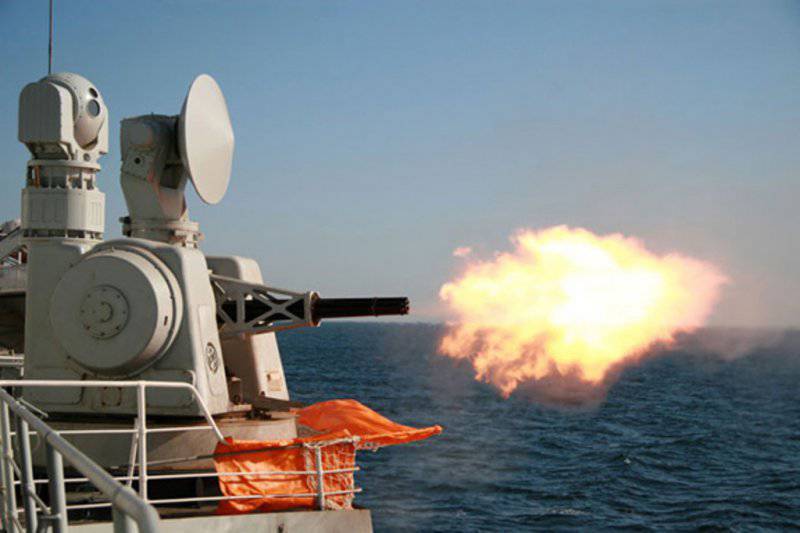
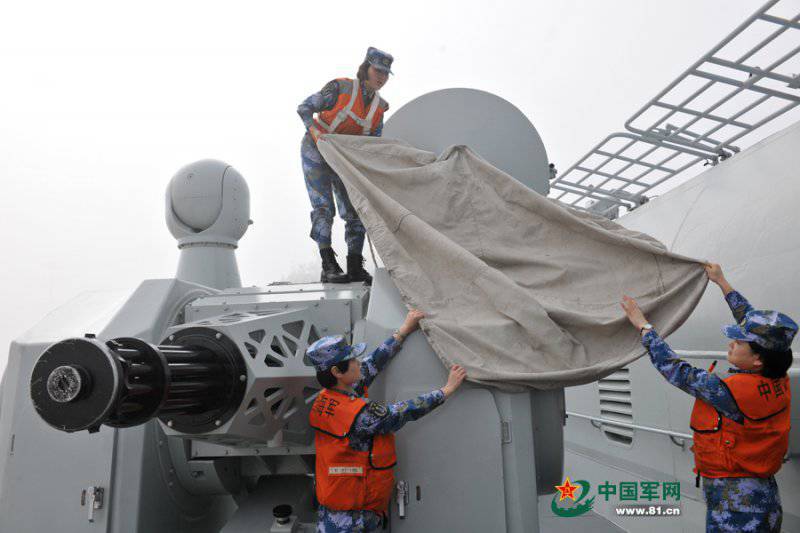
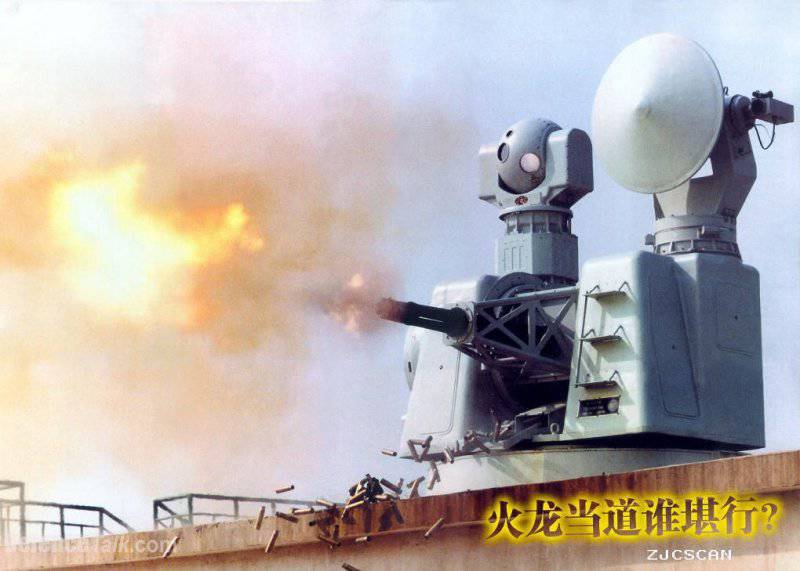
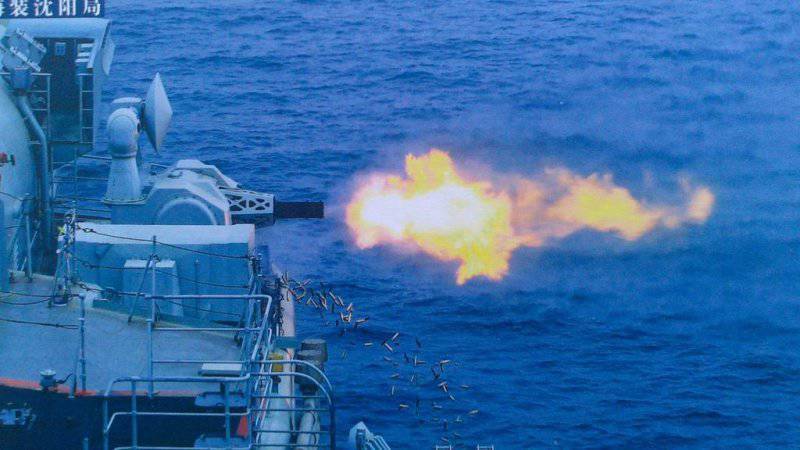
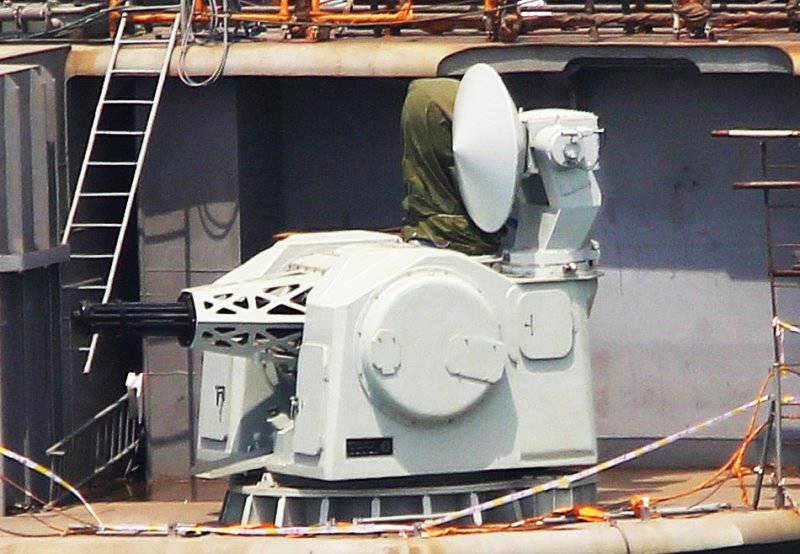
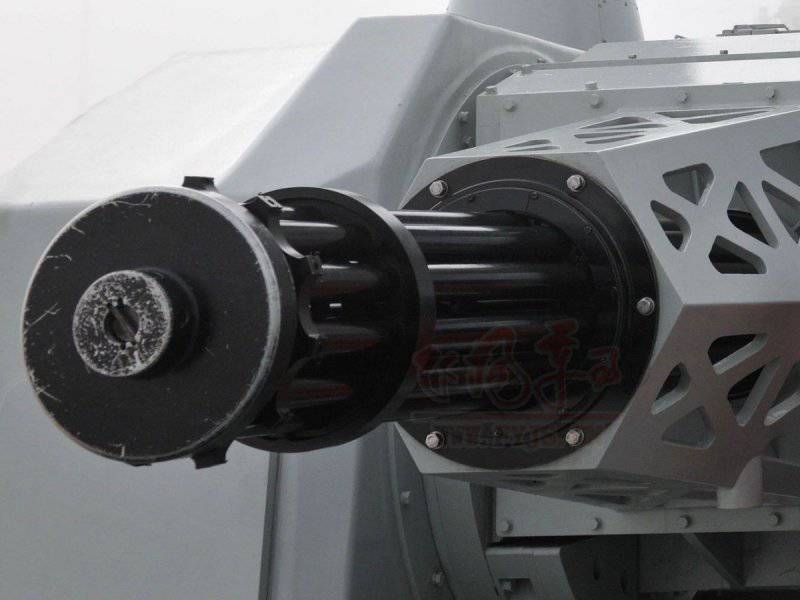
Information